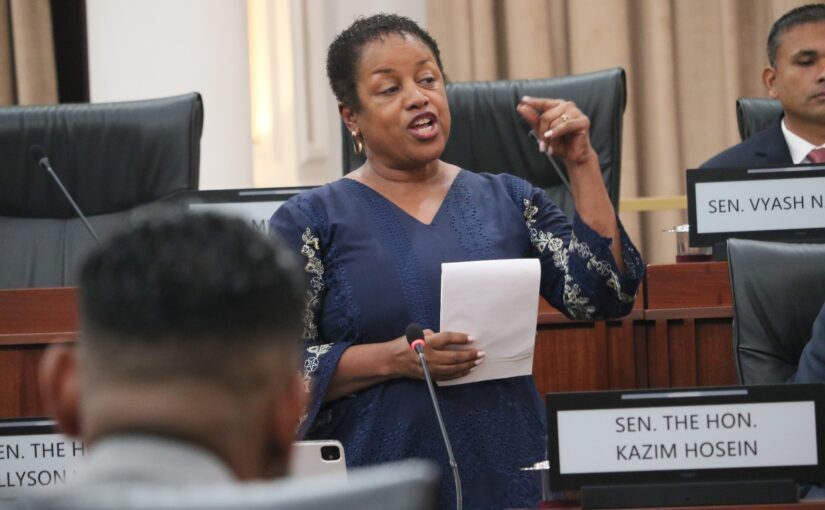If Kamala Harris wins the presidential election on Tuesday, Americans will be told that the final vote count is a sacred number that was practically...
Vous n'êtes pas connecté
- English
- Français
- عربي
- Español
- Deutsch
- Português
- русский язык
- Català
- Italiano
- Nederlands, Vlaams
- Norsk
- فارسی
- বাংলা
- اردو
- Azərbaycan dili
- Bahasa Indonesia
- Հայերեն
- Ελληνικά
- Bosanski jezik
- українська мова
- Íslenska
- Türkmen, Түркмен
- Türkçe
- Shqip
- Eesti keel
- magyar
- Қазақ тілі
- Kalaallisut ; kalaallit oqaasii
- Lietuvių kalba
- Latviešu valoda
- македонски јазик
- Монгол
- Bahasa Melayu ; بهاس ملايو
- ဗမာစာ
- Slovenščina
- тоҷикӣ ; toğikī ; تاجیکی
- ไทย
- O'zbek ; Ўзбек ; أۇزبېك
- Tiếng Việt
- ភាសាខ្មែរ
- རྫོང་ཁ
- Soomaaliga ; af Soomaali
 Maroc - dailynews.co.za - Business - 12/Aug 17:23
Maroc - dailynews.co.za - Business - 12/Aug 17:23
New report seeks to tackle logistics logjams
Nicola MawsonData coming out of a new Pulse Report, under the auspices of the government-initiated national logistics crisis committee (NLCC) that will track logistics logjams will provide weekly statistics so that obstacles affecting South Africa’s logistics network can be identified, and the results of interventions tracked.The report’s launch comes against the backdrop of Transnet implementing a turnaround plan that aims to enhance competitiveness of its ports, recover rail volumes, and improve operating efficiency at ports, among other aspects. In addition, it has been released at a time when South Africa’s roads are characterised by a lack of maintenance and many potholes.The NLCC was established by the Presidency under Operation Vulindlela in 2023 to address the state of logistics in South Africa, which was costing the country around R1.5 billion per day. The government works together with business and social partners.Jayce Lane, managing director of Crickmay & Associates, which compiled the report, explained at the launch that it was important to understand how the logistics network is affected because supply chain corridors’ competitiveness is impacted by how well they operate. Lane said the report aimed to get to one single truth and not work on hearsay but on established data, which makes a “great basis for work going forward”. The information would enable stakeholders to identify and address obstacles, as well as then being able to determine the impacts that the changes make, he said.The Pulse Report considered data obtained from eight major corridors as well as all ports and border posts. The data was gleaned from 80 million heavy motor vehicles records a day, which was anonymised, as well as about 150 000 records a week covering all vessels moving in and out of the country’s ports, which includes the time they spend there.The eight major corridors are:∎ N1 Corridor Cape Town/Beitbridge∎ N2 Corridor Ermelo/Richards Bay∎ N3 Corridor Durban/Johannesburg∎ N4 Corridor Pretoria/Maputo∎ N8 Corridor Bloemfontein/Nakop∎ Kuruman/Saldanha Bay∎ Kuruman/GqeberhaWalvis Bay/Cape TownLane said, as an example, the data indicated that week-on-week traffic between Kuruman and Gqeberha was just more than a fifth slower last week, which is about the same extent to which the N3 from Johannesburg to Durban slowed down. However, he pointed to the fact that the data also highlighted the fact that the Walvis Bay to Cape Town route is 16% quicker.“In a snapshot, you get a good sense just how the corridor has been performing over the week that compares with the previous reading,” Lane said. He added that the report also included information on border queues, which allowed stakeholders to determine whether the wait time had improved.Simultaneously, said Lane, it was important that the industry self regulates and tries to promote accountability between parties. “Any port or any border process is a shared resource and, depending on how well we use that shared resource collectively, will determine how effective those ports, borders or corridors will be. And that’s important,” he said.Dr Juanita Maree, CEO of the Southern African Association of Freight Forwarders, said the initiative was vital because of the burden of logistics costs on the economy.“The additional expenses incurred due to the inefficiencies at ports and border posts, along with the deteriorating rail and road infrastructure, present a significant challenge to the sustainability of the logistics sector,” Maree lamented. “This situation also places South Africa’s competitive standing in the global market at risk, with the possibility of import and export freight being diverted to more efficient routes, which could have considerable implications for the national economy,” she said. BUSINESS REPORT
Articles similaires
Poverty Is Rising And Inequality Widening In Asia And The Pacific – OpEd
The Asia-Pacific region, with over 4.8 billion people spread across 58 countries and territories, is home to about 60 percent of the world’s total...
AFPA pleased with ABARES forest report
New Australian Bureau of Agricultural and Resource Economics and Sciences forest data released this week shows Australia’s forestry sector is well...
AUKUS Partners Complete Successful Tests Of Autonomous And Networked Systems In Maritime Experimentation
In a significant development for maritime security, the United States, Australia, and the United Kingdom (AUKUS) have completed successful tests of...
Crime’s chilling impact
JUST WHEN it seems there is little more to be said about crime, we are forced to confront yet another aspect of its chilling impact on our...
Small Business Week begins in Quinte
A special week which focuses the spotlight on some of the engines of the local economy began in style on Monday. A special ceremony was held to kick...
KZN Trucker Jailed 12 Years for Selling R250k Chrome Load for Just R15k
A KwaZulu-Natal truck driver has been jailed for an effective 12 years after he pleaded guilty to theft of chrome that was meant to be exported....
Anxious officials warn final results may lag in deadlocked presidential contest
WASHINGTON — As an exceedingly bitter, tight and dark campaign for the presidency moves into its last moments, apprehensive election officials and...
West: Work-from-home policy pilot project in November
PUBLIC Administration Minister Allyson West said a pilot project for a remote work policy for the public service will begin in November, following...
The Biden-Harris Administration Wasted Nearly One Billion On Misinformation – OpEd
The party of “Science” apparently misled hundreds of millions of people on the actual science surrounding the Covid-19 pandemic. Stop the...
Les derniers communiqués
-
Aucun élément



